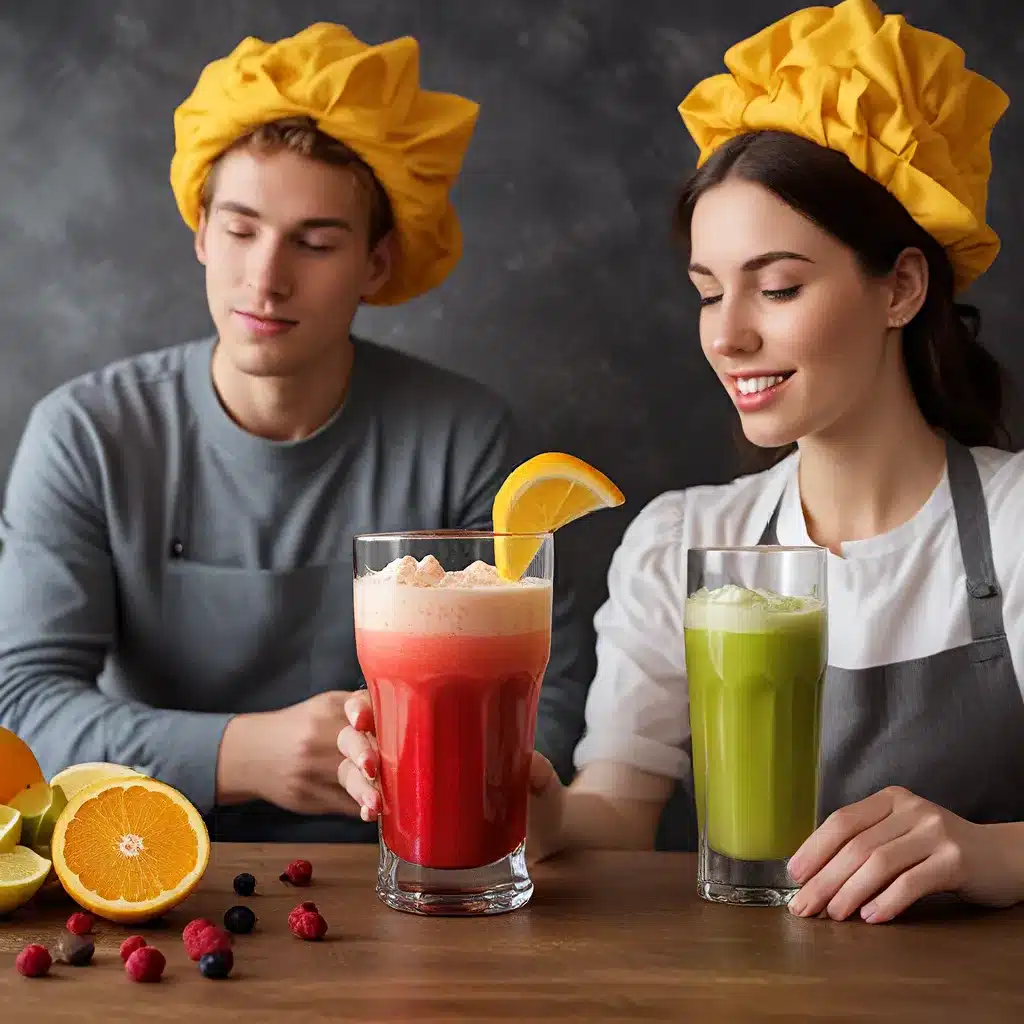
As I sit here at the bar of my local pub, nursing a perfectly paired craft cocktail, I can’t help but marvel at the incredible symphony of flavors unfolding on my palate. It’s as if the bartender has tapped into some secret, alchemical knowledge – blending spirits, juices, and botanicals in a way that amplifies and elevates each individual component. And when I pair that drink with the savory, umami-rich dish I’ve ordered, it’s like the heavens have opened up and bestowed upon me the gift of culinary nirvana.
But have you ever wondered what exactly is happening behind the scenes to create these sublime food and drink pairings? What is the science, the method, the madness that goes into crafting these flawless flavor duets? Well, my friend, allow me to enlighten you.
The Art of Pairing: Unlocking Flavor Synergy
At the heart of any successful food and drink pairing lies an understanding of flavor chemistry and the intricate dance between complementary tastes and aromatics. It’s not just a matter of randomly throwing together a glass of wine and a plate of pasta – oh no, there is a method to the madness.
The Up & Under Pub, where I’m currently enjoying my expertly crafted libation, has made it their mission to elevate the pairing experience to an art form. And they’re not alone – across the culinary landscape, chefs and mixologists are engaging in a delightful tango, harmonizing their creations to unlock flavor synergy that leaves our taste buds positively euphoric.
Deconstructing the Flavor Wheel
At the core of this pairing mastery is a deep understanding of the flavor wheel – that colorful, segmented diagram that maps out the various taste profiles and their intricate relationships. Sweet, sour, salty, bitter, and umami – these are the fundamental building blocks of flavor, and the skillful manipulation of these elements is what separates the culinary virtuosos from the culinary also-rans.
But it’s not just about understanding these basic tastes in isolation. The true magic happens when you start to explore the interplay between them, how they can amplify, balance, or even counteract one another. A prime example? The classic pairing of a crisp, acidic white wine with a rich, creamy seafood dish. The bright, zippy acidity of the wine cuts through the unctuous mouthfeel of the seafood, creating a harmonious balance that leaves you wanting more.
Crafting the Perfect Pairing: A Masterclass
So, how exactly do the masters of food and drink pairing achieve this harmonious alchemy? It all comes down to a deep understanding of flavor profiles and a willingness to experiment.
Step 1: Identify the Dominant Flavors
The first step in crafting a flawless pairing is to identify the dominant flavors in both the food and the drink. Is the dish heavy on umami-rich ingredients like mushrooms or soy sauce? Or is it more focused on bold, spicy notes? And what about the drink – is it a citrus-forward cocktail or a malty, caramel-tinged beer?
Step 2: Seek Complementary Flavors
Once you’ve identified the dominant flavors, the next step is to find complementary tastes that can enhance and elevate the overall experience. A spicy, chili-infused dish might pair beautifully with a crisp, hop-forward IPA, the bitterness of the hops cutting through the heat and providing a refreshing contrast. Or a rich, chocolate-laden dessert could be perfectly balanced by a smooth, velvety port wine, the sweetness of the wine complementing the decadence of the chocolate.
Step 3: Experiment and Refine
Of course, the art of pairing doesn’t end there. The true masters are constantly experimenting, tweaking, and refining their combinations, always striving to push the boundaries of what’s possible. They might try swapping out one ingredient for another, or modifying the preparation method, all in the pursuit of that elusive state of flavor nirvana.
Bringing It All Together: The Science of Sensory Perception
But the story of food and drink pairing doesn’t end with just the flavors themselves. The science of sensory perception also plays a crucial role in the overall experience.
Consider, for example, the way our sense of smell interacts with our sense of taste. Research has shown that the aroma of a dish or drink can dramatically influence our perception of its flavors, with certain aromatic compounds even having the power to alter our taste buds’ response to sweetness, sourness, or bitterness.
And then there’s the importance of texture – the way a dish or drink feels in our mouths. A smooth, creamy texture can create a luxurious mouthfeel that pairs beautifully with a light, effervescent cocktail, while a crisp, crunchy texture might be the perfect foil for a robust, full-bodied red wine.
Putting It All Together: A Harmonious Culinary Experience
So, as I sit here at the bar, sipping my expertly crafted cocktail and savoring each bite of my perfectly paired dish, I can’t help but marvel at the incredible alchemy that has taken place. It’s not just about the individual flavors, but the way they’ve been expertly orchestrated to create a symphony of taste that leaves my senses utterly captivated.
And that, my friends, is the true essence of the art of food and drink pairing. It’s about understanding the science, embracing the experimentation, and ultimately, crafting an experience that transcends the mere act of eating and drinking. It’s about harmonizing flavors, unlocking hidden depths of taste, and elevating the culinary journey to new, delightful heights.
So the next time you sit down to enjoy a carefully curated meal or cocktail, take a moment to appreciate the masterful work that has gone into creating that flawless flavor duet. And who knows – maybe you’ll even be inspired to join the ranks of the pairing maestros, blending and balancing your own culinary creations in pursuit of that elusive state of gustatory bliss.

